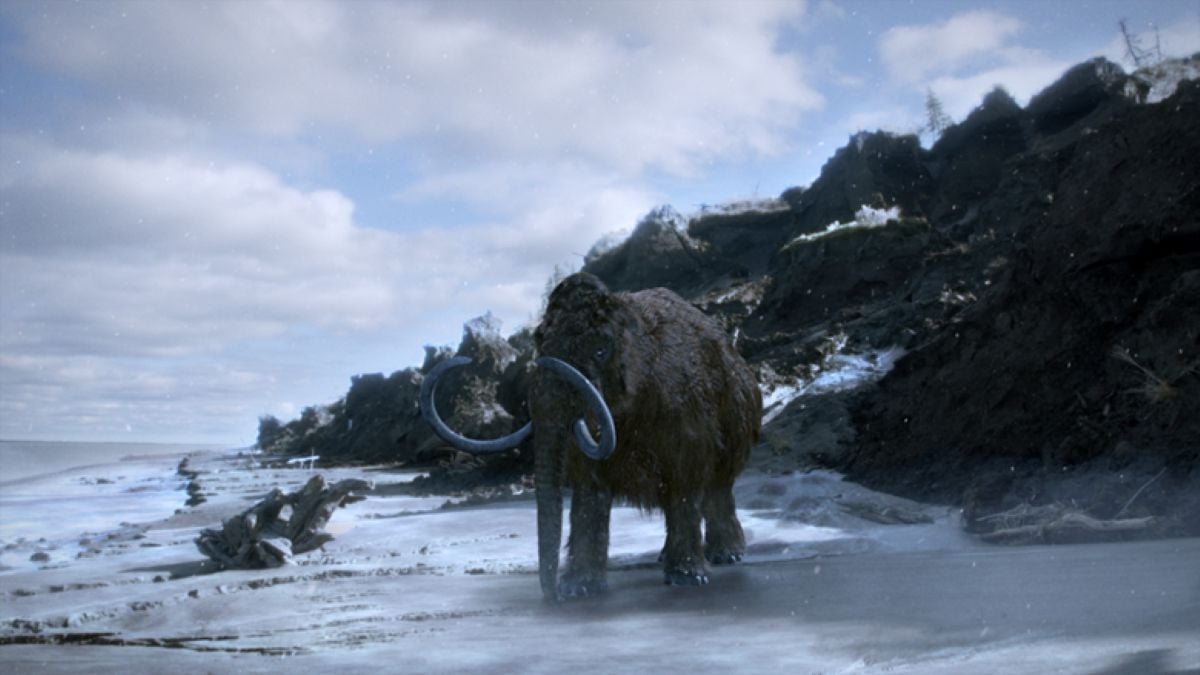
Lost Beasts of the Ice Age is a two-hour special, a cutting-edge Science Channel event where top scientists from around the world look to uncover extraordinary evidence into the lives of Ice Age animals, including the fabled woolly mammoth.
The special takes a team of scientists who go in search of woolly mammoths and other creatures that roamed the Earth in that time frame.
Our exclusive clip reveals professor Dan Fisher, part of the core group of scientists out in the field, and he is not just looking for the mammoth, he’s also eager to find evidence of Ice Age humans.
He says: “I’m always sort of trying to look out for evidence of human interaction with these animals. What caused these animals to go extinct?”
Evidence of humans in Ice Age Siberia is rare… but a few sites have revealed stone tools and butchered mammoth bones.
Some with the tips of stone weapons still inside them. Dan is on the lookout for evidence that humans were hunting in this region over 30,000 years ago.
A couple of tusks were recently discovered here within the hillside. Could the rest of the mammoth be nearby?
“Pre-history and the Ice Age have been a core part of the Discovery legacy dating back to Raising The Mammoth in 2000 and with this special we continue to be the leader in focusing on these big questions of our past,” said Marc Etkind, General Manager, Science Channel in a press release.
Finding a whole mammoth in situ in the place where it was deposited seems like a ridiculous dream but all signs seem to be suggesting that the area they are searching has got really special material to sift through.
The special will also explore whether these discoveries combined with the latest techniques in genetic science can bring long-extinct animals back to life with the latest cloning techniques. The scientists found DNA in excellent condition, which could speed up the cloning process.
This team also found a thirty-thousand-year-old wolf from an extinct breed of ice age wolves. Their find suggests human hunters as the head of the wolf is shown to have been decapitated.
The official logline from Science Channel:
A team of international scientists including Dr. Tori Herridge, Paleontologist at the Natural History Museum in London, and Harvard Medical School Geneticist Professor George Church, [set out ] on an expedition to seek out well-preserved remains of woolly mammoths, woolly rhino, wolves and cave lions that once roamed Siberia.
Working in tunnels dug by locals on the hunt for valuable giant mammoth tusks, their findings may reveal extraordinary new evidence that could lead us closer to answering one of the biggest mysteries of the ice age – what caused the woolly mammoth to go extinct?
Who is part of the scientific team?
Dr. Tori Herridge, Palaeontologist of the Natural History Museum, who says: “The quest to understand the extinction of so many large animals at the end of the last ice age – and whether humans, or climate change, or both, were responsible – has never felt so important in a world where wildlife is under increasing threat.”
Professor George Church, Geneticist, Harvard Medical School, talking about his plan to use genetic engineering to bring mammoths back to Siberia, and said: “The project really feels like it’s leaping forward. We didn’t expect so many high-quality specimens. It’s just very exciting.”
Dr. Love Dalen of the Swedish Museum of Natural History.
Dr. Dan Fisher, the University of Michigan Claude W. Hibbard Collegiate Professor of Paleontology; Director, Museum of Paleontology.
What did they do after the discovery?
After the team gathered the evidence out in the field, the researchers returned to their respective labs in London, Stockholm, Boston, Detroit, and Maine, to assess the findings.
The special will delve into this new light shed on the fates of these beasts and how they lived. More importantly how these mammoth specimens have maintained the well-preserved DNA needed to bring these majestic creatures back to life through gene editing.
Lost Beasts Of The Ice Age airs this Sunday, February 24 at 8/7c on the Science Channel.